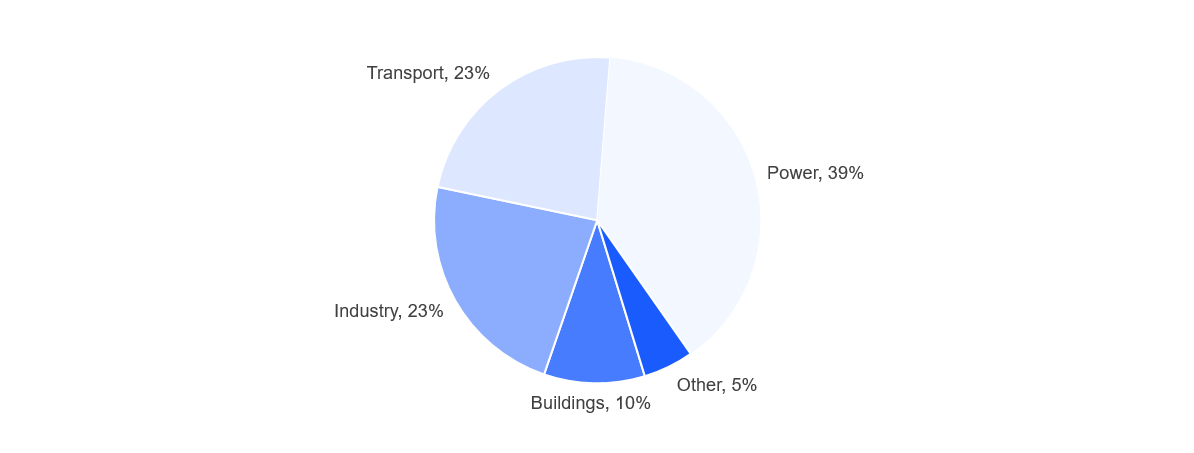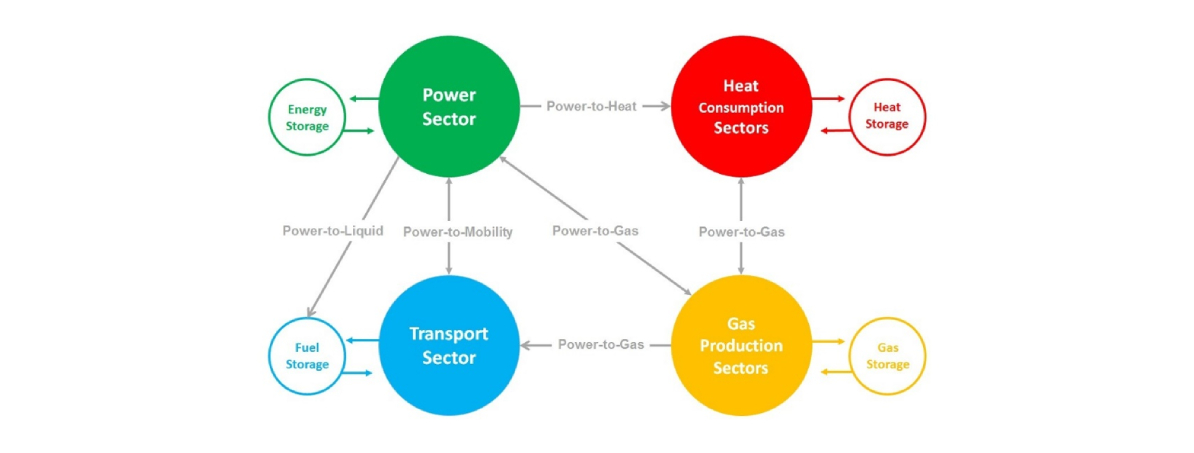Note – this article was originally published on ingenuity.siemens.com
The global energy system is undergoing a major transition to keep the global temperature rise well below 2°C, potentially at 1.5°C by 2050, in line with the 2015 Paris Agreement objectives, without compromising the security of energy supply while keeping the energy prices affordable for domestic, commercial and industrial users.
Renewable energy continues to make its presence in the global electricity generation but its incorporation into other sectors such as transport, industry and buildings still lags the progress needed to fight climate change. According to the Renewables 2019 Global Status Report renewables provided an estimated nearly 26% of global electricity generation to the end of 2018 (including hydropower), whilst the share of renewables for transport, industry and buildings sectors combined was nearly 9%.
The sectoral imbalance in using renewable energy resources is to great extent due to lack of suitable policy supports. As the UK government has committed to net-zero emission by 2050, with intermediate targets – in line with the European Union commitments – to reduce emissions by of 40% by 2030 and getting 32% share of renewables in final energy consumption by 2030 from 20% in 2020, the notion of deep electrification and “sector coupling” has attracted the attention of policymakers, and hence opportunities continue to grow to increase the renewable share in energy consuming sectors.
Sector coupling, which mainly aims to electrify the energy consuming sectors which would typically rely on fossil fuels to operate, facilitates the decarbonisation of a wider spectrum of economic activities by integrating the rising share of variable renewable energy generation with energy consuming sectors.
Contrary to general belief, the great portion of greenhouse gases emissions do not originate from the power sector, but rather from the usage of fossil-based energy in other sectors. The power sector’s share of total global GHG emissions is 39% whilst the industry, transport, and buildings sectors combined account for 56% GHG emissions globally (see Figure 1). As shown, Industry and transport sectors are the second-largest sources of emissions behind the power sector.

Figure 1: Global direct GHG emissions by sector (IEA)
By indirect electrification, sector coupling enables decarbonisation of sectors including carbon-intensive industrial processes such as steel and cement, and sectors historically difficult to decarbonise such as long-distance transport and aviation, as well as heating and cooling of both industrial and domestic properties, where the penetration of renewables were not extensive. Moreover, sector coupling integrates gas and electricity networks and the conversion of one energy carrier to another, and hence creates new links between energy carriers and their respective transport and distribution network infrastructures.
The concept of “Power-to-X” addresses the electricity conversion pathways that utilises electricity from renewable energy into hydrogen, methane, or liquid fuel. The green electricity could also replace the fossil fuels used in relation to heat supply. The “X” in this terminology can potentially refer to Power-to-Gas, Power-to-Liquid, Power-to-Heat, etc. (see Figure 2). Sector coupling also highlights the key role of Power-to-Gas in coupling electricity and gas systems. This technology has lately been observed as one of the main enablers of the energy transition towards a highly integrated energy system.

Figure 2. schematic diagram of sector coupling and the interconnected Power-to-X technologies
Currently, sector coupling is drawing attentions as it offers advantages to the whole energy system. it allows excess renewable electricity to be exploited and used in forms suitable for end-use consumptions. For instance, Power-to-Gas technologies allows the conversion of electricity into hydrogen (green hydrogen) via electrolysis and then into synthetic methane via methanation. Both these fuels could be stored on a large scale for a longer period, reducing the need for large scale battery storage to sustain renewable electricity generation on a high wind or sunny day.
Currently, the excess renewable electricity is curtailed, directly hurting the bottom-line of the developers. By integrating higher levels of renewable electricity and minimising curtailment, sector coupling can accelerate the availability of finance for renewable energy and scale up the market towards reaching its potential.
Considering the large capacity of gas pipelines across Europe, it is estimated even low blend share of hydrogen would lead to the absorption of substantial quantities of intermittent renewable energy, and progressively decarbonise the gas grid. In the long run, the gas network could be considered a way to store massive amounts of renewable electricity, avoiding expensive electricity grid upgrades and expansions. Moreover, in transport, fuel cell electric vehicles using hydrogen as fuel could complement battery electric vehicles in specific segments of the transport industry, such as long-distance transport and aviation.
Overall, there is great potential for sector coupling. It makes decarbonisation across all sectors possible and indirectly stipulates expansion of renewable energy in all sectors. However, sector coupling would require significant changes in the energy system. For instance, the infrastructure of power and other sectors needs to be highly integrated, particularly the electricity and gas networks.
Thus, coordination in the planning of these networks and alignment between their regulatory frameworks are crucial. In addition, current legislation provides very little or no incentives for the use of advanced fuels in industrial and transport sectors. Unlike biofuel, the Greenhouse Gas Emission Trading Systems does not currently recognise green hydrogen as an emission reduction measure.
Despite several studies to have proven the viability of Power-to-Gas technologies, it is not yet commercially viable to invest in such facilities at national or international scale. There are few marketable options available as the required technologies are still in the early stages of developments. A few Power-to-Gas pilot plants are under test and operation, and are connected to the gas networks, though further research and testing are essential to evaluate their real potential in terms of cost and benefits.
